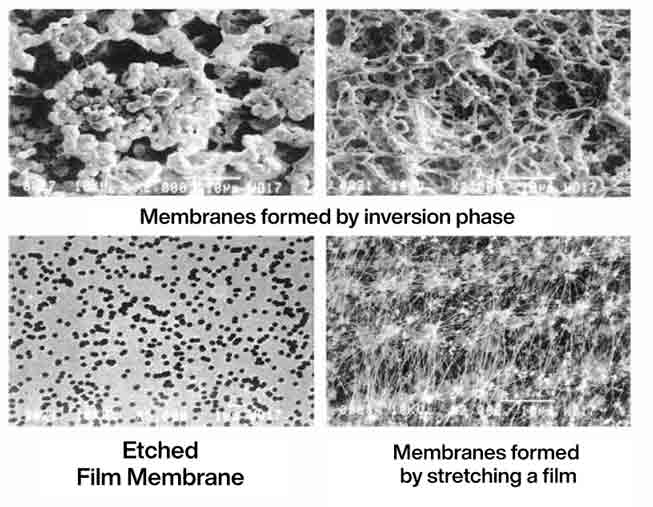What are the filter media for liquids that exist?
A filter media is defined as: “any material which, under specified operating conditions, is permeable to one or more components of a mixture, solution or suspension and impervious to the remaining components “1. The main role of a filter medium is to cause the separation of particles from a fluid with minimum energy consumption.
There are several types of filter media. All of them have empty spaces, also known as “pores”. For example:
-
Meshes and fabrics woven
Of metals, polymers or natural fibers such as cotton.
-
-
Non-woven materials
(Non-wovenare an accumulation of fibers bonded together by chemical agents (resins or adhesives) or physical means (such as temperature and pressure). Some examples are thermo-adhesive fibers or foamed polymers. These materials generally create more complex porosities. This complicates the passage of solids through them.
-
-
Membranes
This are permeable materials. They are usually made of polymers or ceramics. According to the method of manufacturing the membrane, various structures can be obtained, such as those shown below:

-
Granular materials
They are used as filter media or as support systems in deep-bed filters. In packed columns, they form inter-particular spaces. The size of these spaces will depend on the shape and size of the granular media. Below, is a picture of a silica sand bed approach.
Bibliography
- Wakeman (2005), Richard J., Solid/liquid separation: principles of industrial filtration. Elsevier.
- (1999). Water Quality & Treatment a Hand book of Community Wate rSupplies. McGraw-Hill.
Comparte:
Necesitas más información, escríbenos.
Algunos productos que te pueden interesar
-
Parker EH Stainless Steel Single Filter Housing EH
Add to quote -
Sterilizing Grade Pharmaceutical Liquid Filters – PROPOR SG
Add to quote -
Fulflo SB single and multiple bag filter housing made of carbon or stainless steel with ASME code
Add to quote -
Parker Honeycomb™ Industrial Winding Filter
Add to quote -
Parker Fulflo SF Multi-Cartridge Filter Vessels
Add to quote -
Parker Flo-Pac Filter Cartridges
Add to quote -
Parker DuraBond™ Heavy Duty Meltblown Filter
Add to quote -
Parker PHL Liquid Housing Range
Add to quote


















